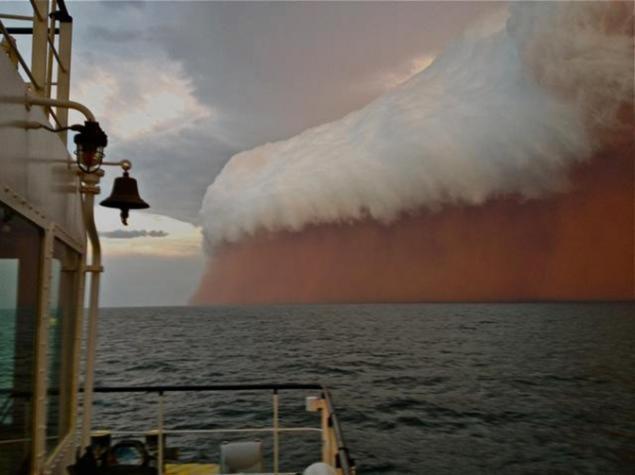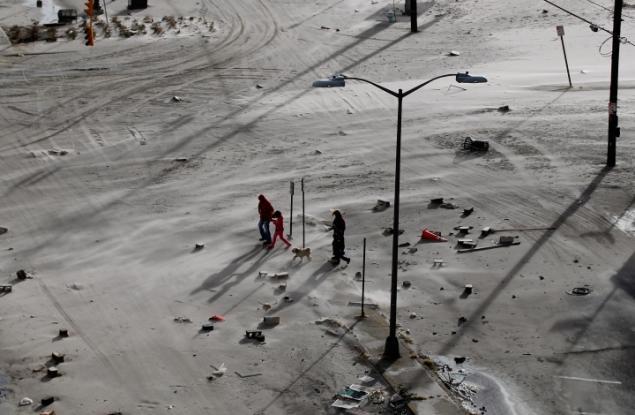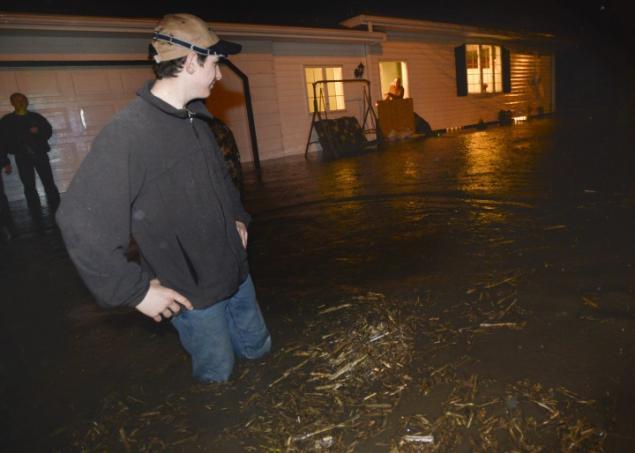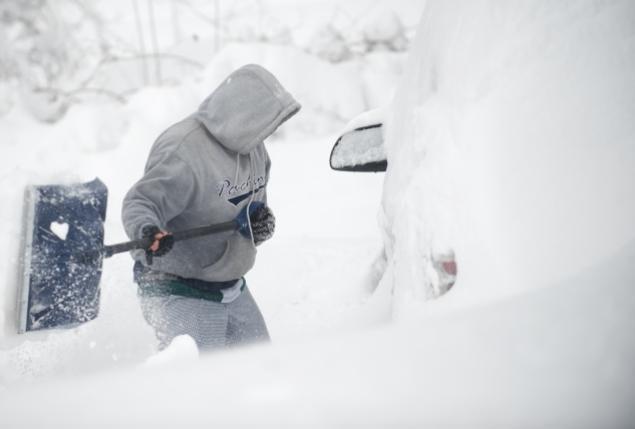May 12, 2013
The concentration of carbon dioxide, a harmful greenhouse gas, in the atmosphere has reached a distressing number, the highest it’s been in millions of years. Scientists warn that this is the result of man-made climate change.

May 12, 2013
The concentration of carbon dioxide, a harmful greenhouse gas, in the atmosphere has reached a distressing number, the highest it’s been in millions of years. Scientists warn that this is the result of man-made climate change.

The Mauna Loa Observatory atmospheric research facility on the island of Hawaii sits on the north flank of Mauna Loa volcano.
Mankind's effect on the environment just reached an all-time high at hitting new lows.
The concentration of carbon dioxide (CO2) — a greenhouse gas emitted when humans burn fossil fuels — in our planet's air has reached a distressingly high level that is unprecedented in human history.
Earth's atmosphere now has about 400 molecules of CO2 in every million molecules of air, the National Oceanic and Atmospheric Administration (NOAA) announced.

A towering red dust storm passes over the ocean ahead of a cyclone racing toward the west coast of Australia on January 9.
Scientist Charles Keeling started monitoring rising CO2 levels at the Mauna Loa Observatory on Hawaii's Big Island in 1958 when the concentration was 317 parts per million (ppm).
The graph plotting this ascent is now known as the Keeling Curve.
Two instruments at Keeling's former observatory added the grim milestone of 400.03 ppm to that curve Thursday.

A tremendous winter storm plows across the U.S., pounding the northern states with snow on March 5.
Back in the '50s, Keeling explained that rising CO2 would result in droughts, heat waves, higher sea levels and scarcer food supplies.
Keeling tried to alert the world to the disastrous effects of man-made global warming but his predictions went largely unheeded.
With recent disasters such as Hurricane Sandy, however, society appears ready to listen.

Long Islanders walk on a Long Beach street covered in sand after Hurricane Sandy struck the Empire State on October 33. President Obama declared the situation a "major disaster."
Veerabhadran Ramanathan, a professor of climate and atmospheric sciences, at the University of California, San Diego, told ABC News what Keeling feared will come to pass if humanity does not change course.
"If we can stabilize CO2 concentration below 450 ppm and reduce short-lived warming pollutants … in the lower atmosphere," Ramanathan said, "we can cut the rate of warming during this century by two-thirds and sea-level rise from now until 2100 by one-third."
These actions and others like them, he explained, could save 4.5 million lives that are now lost to indoor smoke and outdoor pollution and save as much as 100 million tons of crops destroyed by ozone pollution.

An Illinois teenager stands in knee-high waters April 18 after heavy rains flooded many homes in his neighborhood.
"This would be the best legacy we can give to future generations and we are fortunate we still have time to accomplish this," Ramanathan said.
The earth has not experienced the current CO2 levels in 3 to 5 million years. The scientific community, hardly caught off guard by this number, has steadily observed CO2 levels escalate from 280 ppm since about 1780, the advent of the Industrial Revolution.

Long Islanders shovel snow after a blizzard hit New York on February 9.
Courtesy: NYDN
















































































































